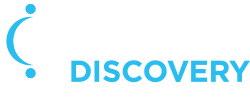Discover how our comprehensive GABAA receptor expertise and data-driven insights can expedite your CNS drug discovery research today.
Introduction
The majority of inhibitory neurotransmission in the brain is mediated by the binding of γ-aminobutyric acid (GABA) to the GABAA receptor. These receptors mainly consist of two α subunits, two β subunits, and either a γ or δ subunit with the varying subunit compositions determining the biophysical and pharmacological properties of the receptor. Dysregulation of GABAergic neurotransmission is associated with many neurological diseases and psychiatric disorders, making these receptors attractive targets for drug discovery programs.
Developments in automated patch clamp technologies have allowed for rapid testing of large numbers of compounds against ion channel targets, however until now, the lack of an expansive panel of GABAA cell lines has limited the identification and characterization of subtype-selective GABAA compounds. To help overcome this, SB has developed a GABAA receptor discovery platform comprising a comprehensive panel of 20 human GABAA recombinant cell lines stably expressing each α subunit in combination with one of three β subunits and γ2L. In addition this panel also includes the extra-synaptic α4β3δ and α6β3δ receptor subtypes, creating opportunities to improve subtype-specific drug efficacy, safety and tolerability.


